2. e2-e4 / Ng8-e7
3. Nb1-c3 / h7-h6
4. Ng1-f3 / g7-g5
5. h2-h4 / f7-f6
6. h4xg5 /
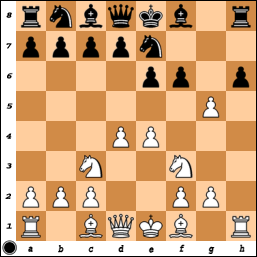
As sstimson pointed out, those pawns are getting annoying. Here, I can trade a pawn for pawn with no consequences, and it opens up my rook file.

 - Get your Detective Conan bobbleheads today! -
- Get your Detective Conan bobbleheads today! - 
 - Get your Detective Conan bobbleheads today! -
- Get your Detective Conan bobbleheads today! - 

Yeah, that would be a waste of a perfectly good pawn. The way it looks right now, either your pawn at f6 or h6 will be taken by the end of the next turn.sstimson wrote: Your next move might be P-g6 but that is unlikely as it protects my king and is really a non threat
 - Get your Detective Conan bobbleheads today! -
- Get your Detective Conan bobbleheads today! - 
White / Blacksstimson wrote:
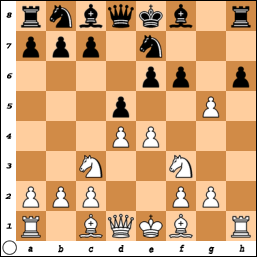
---------- Edited 4-27-2011 ----------French Defence
By advancing the d pawn two squares black poses an immediate challenge to the powerful white center. The white player must now react by either advancing the pawn which will lead to the advance variation where he/she will get to put immediate pressure on the black king side, but black will have more than enough to put the pawn wedge under serious attack with moves like c5, Nc6, Qb6 and Nh6( followed obviously by Nf5). Another choice for white is to defend the pawn with either Nc3 or Nd2. Out of this two possible defenses the first is the most common, as it does not block the bishop on c1, it also puts some mild pressure on d5, problem is that black has many possible answers including the Winawer variation(3...Bb4) which leads to extremely complex positions( which are usually closed) and therefore the amount of theory behind Nc3 is too big and too complex for the move to be played lightly. Nd2 on the other hand is much safer but also less ambitious and harder to get an advantage with. Black will have the choice of either forcing e5( with 3...Nf6) and attacking the pawn wedge at both base and head with the breaks c5 and f6 or exchanging an isolated d pawn for active pieces with 3...c5.
At last and least white may try the exchange variation 3 exd5 which is unambitious and gives black equal chances for free but avoids the complications of the other variations.
c-square wrote: Yeah, that would be a waste of a perfectly good pawn. The way it looks right now, either your pawn at f6 or h6 will be taken by the end of the next turn.
---------- Edited 4-28-2011 ----------sstimson wrote:
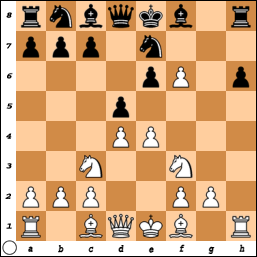
I agree. Allowing me those two pawns in the center gave me a big advantage.sstimson wrote: P-Q4 - A move I should have made a long time ago - French Defense -
Thanks! It's an interesting one because one doesn't usually see pawn forks involving only pawns.sstimson wrote: By the way Congrats on your first fork.
 - Get your Detective Conan bobbleheads today! -
- Get your Detective Conan bobbleheads today! - 
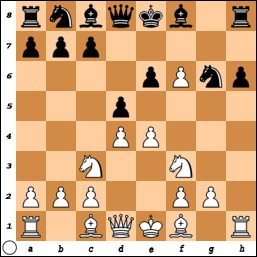
Main Page hereA Zwischenzug (pronounced "ts-WISS-chen-tsug",) or "in-between move," is one that is made unexpectedly in the midst of a sequence of moves. But not just any series of moves, one in which the player falling for the Zwischenzug feels the sequence is forced, while his opponent demonstrates to him that it certainly isn't! Most commonly these fall in between trades where a recapture seems to be the only proper means of play.
Such in-between moves often have a surprising and pleasing effect of increasing the potency of a combination beyond the opponent's expectations.
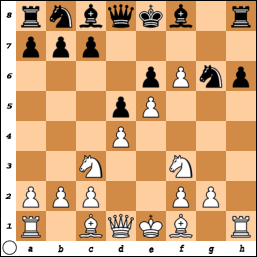
It's true, e4 - e5 is the most sensible move here. It creates a powerful diagonal line of pawns that can only be attacked from the rear.sstimson wrote: Think of the Knight as a carrot. By you doing that move. Your next move WILL BE KING FIVE, otherwise I get the pawn back right away by QxP
And one last thing. You now have a doubled pawn. A weakness for the end game.
You Also must stop me taking the king pawn so again you will move pawn to king five. It is indeed funny that this time I am forcing you to make a certain move.
Perhaps it will be a weakness in the endgame, but it is a strength now. By having two pawns on the f-rank, I can use one for attacking, and still have one to defend my king should I decide to do a king-side castle.sstimson wrote: And one last thing. You now have a doubled pawn. A weakness for the end game.
 - Get your Detective Conan bobbleheads today! -
- Get your Detective Conan bobbleheads today! - 
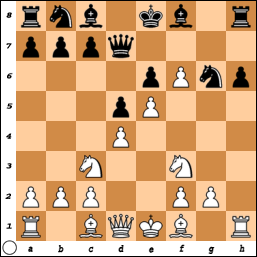
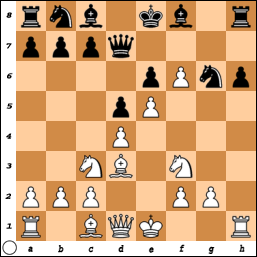
Good choice!sstimson wrote: A question of how to delvop
Q2, B-Q2, N-B3
For Now I take Q2.
B-Q2 for my purposes looks weaker
N-B3 might create a problem later
Order here is important. So I try Q2
 - Get your Detective Conan bobbleheads today! -
- Get your Detective Conan bobbleheads today! - 
There was also the possibility of the very daring Lc1-g5, with the threat f7+! and the loss of a queen. I think it might have been a better choice, but thats difficult to say.sstimson wrote: Your next move WILL BE KING FIVE, otherwise I get the pawn back right away by QxP
You're talking about this move:Callid wrote:There was also the possibility of the very daring Lc1-g5, with the threat f7+! and the loss of a queen. I think it might have been a better choice, but thats difficult to say.sstimson wrote: Your next move WILL BE KING FIVE, otherwise I get the pawn back right away by QxP
 - Get your Detective Conan bobbleheads today! -
- Get your Detective Conan bobbleheads today! - 
For me, instead of the Bishop I would move the Knight to that position andthen to check. That´s the move I was thinking.c-square wrote:You're talking about this move:Callid wrote:There was also the possibility of the very daring Lc1-g5, with the threat f7+! and the loss of a queen. I think it might have been a better choice, but thats difficult to say.sstimson wrote: Your next move WILL BE KING FIVE, otherwise I get the pawn back right away by QxPTrust me, I had been eyeing that move for quite a while. Unfortunately, it doesn't work in this case. With black's knight at g6 protecting his rook, he's free to take my bishop with his pawn, h6xg5.Spoiler:
You mean this move?Holmes wrote: For me, instead of the Bishop I would move the Knight to that position andthen to check. That´s the move I was thinking.
 - Get your Detective Conan bobbleheads today! -
- Get your Detective Conan bobbleheads today! - 